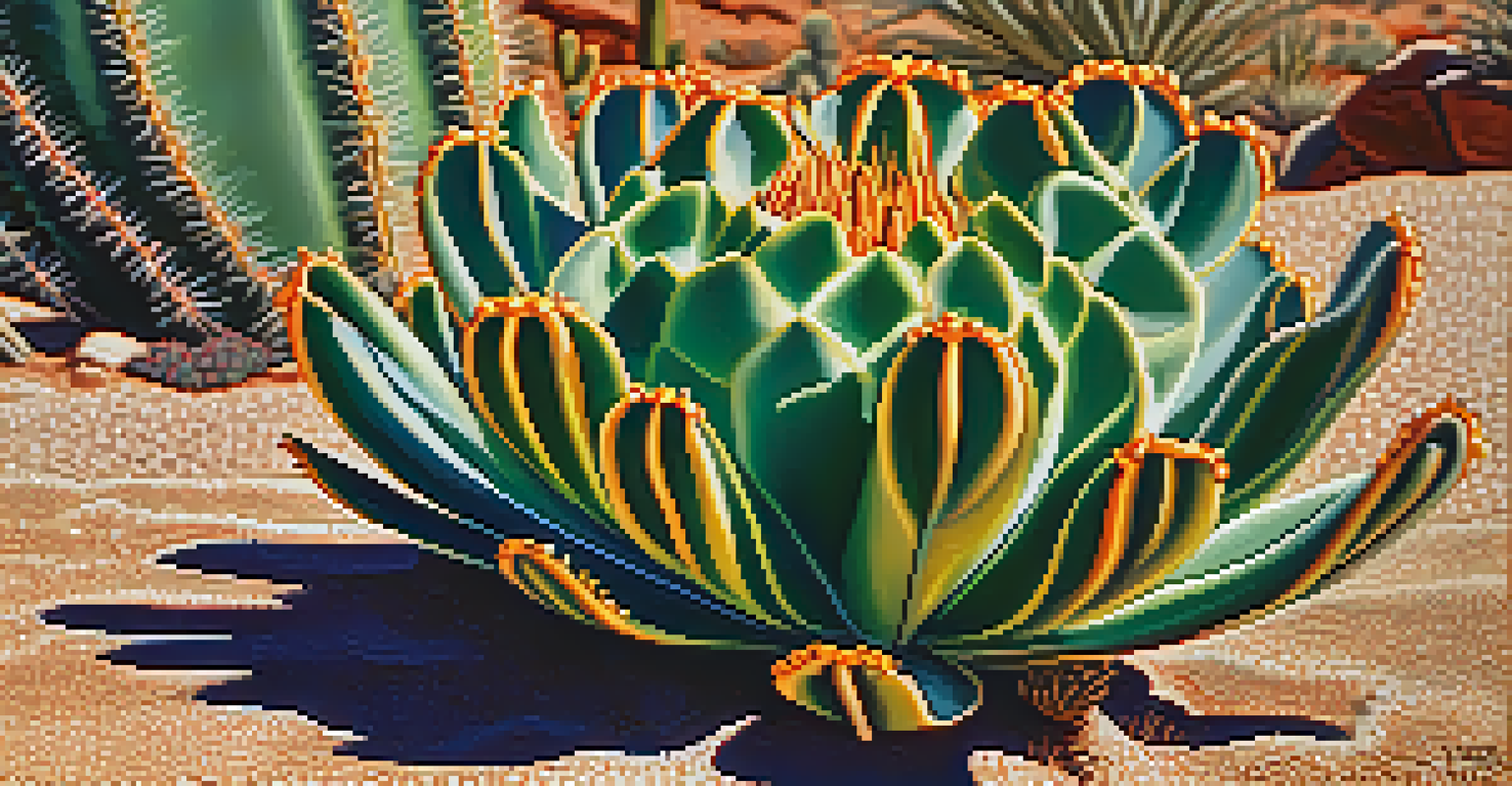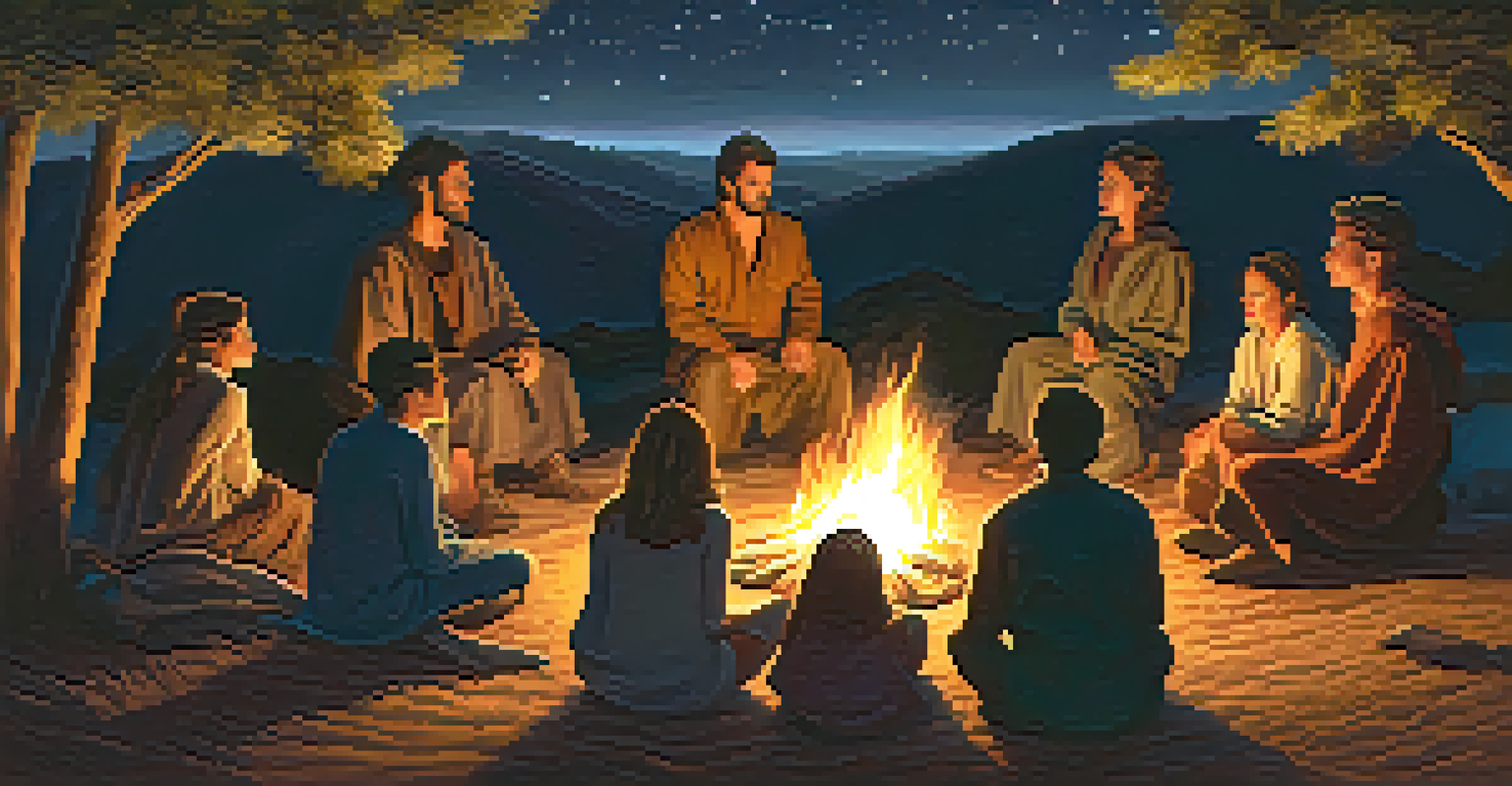Peyote and Spiritual Journeys: Vision Quests Explained

What is Peyote and Its Historical Significance?
Peyote is a small, spineless cactus native to Mexico and the southwestern United States, known for its psychoactive properties. For centuries, Indigenous peoples have used peyote in spiritual rituals to enhance their connection with the divine. This cactus contains mescaline, a chemical that induces altered states of consciousness, often described as mystical or transformative.
The use of peyote is deeply rooted in the traditions of various Native American tribes, particularly in the context of healing and spiritual exploration.
The use of peyote is deeply rooted in the traditions of various Native American tribes, particularly in the context of healing and spiritual exploration. By consuming peyote, individuals seek to gain insights into their lives, their place in the universe, and their relationships with others. This ancient practice is not simply about the substance itself but the sacred rituals and cultural significance surrounding it.
Modern interest in peyote has surged, particularly among those looking for alternative spiritual experiences. However, it’s important to approach this subject with respect for the cultures that have long held these practices sacred. Understanding the historical context of peyote use can enrich our appreciation for its role in spiritual journeys.
Understanding Vision Quests: A Spiritual Practice
A vision quest is a rite of passage in many Indigenous cultures, where individuals seek spiritual guidance and clarity. Participants often embark on a solitary journey into nature, fasting and praying to connect with their inner selves and the spirit world. This profound experience serves as a way to gain insights into one's life direction and purpose.

During a vision quest, individuals may encounter various challenges, both physical and emotional, that lead to deeper self-reflection. The solitude and absence of distractions allow participants to confront their fears and desires, often leading to a transformative awakening. This journey is not just about the destination but the process of self-discovery along the way.
Peyote's Cultural Importance
Peyote has been used for centuries by Indigenous peoples in spiritual rituals, enhancing their connection with the divine.
In some cases, peyote is incorporated into vision quests to enhance the spiritual experience. The substance can open the mind to new perceptions, making it easier to transcend ordinary thoughts. However, combining peyote with a vision quest requires careful consideration, as it demands respect for both the substance and the sacred practices involved.
The Role of Peyote in Vision Quests
Incorporating peyote into a vision quest can amplify the spiritual experience, helping participants to delve deeper into their consciousness. Many individuals report heightened senses, vivid visions, and a profound sense of connection with nature and the universe while under its influence. This can lead to powerful revelations and a deeper understanding of one's life journey.
Embarking on a spiritual journey with peyote and vision quests can be a life-changing experience, rich with insights and personal growth.
However, using peyote in this context is not merely about seeking intense experiences; it’s about finding meaning and clarity. The insights gained during these journeys can offer guidance for personal growth and healing. Participants often emerge with a renewed sense of purpose, feeling more aligned with their true selves.
It’s crucial to approach the use of peyote with intention and respect. Engaging in these practices should be done in a safe environment, ideally under the guidance of experienced practitioners who understand the cultural significance of peyote. This mindfulness ensures the journey is both meaningful and respectful to the traditions it stems from.
Preparing for a Vision Quest with Peyote
Preparation is key when considering a vision quest, especially one that involves peyote. Participants should spend time reflecting on their intentions and what they hope to gain from the experience. This self-inquiry helps to create a focused mindset, allowing for a more profound journey into the self.
Physical preparation can also be important, as participants often engage in fasting or cleansing rituals prior to the quest. These practices not only purify the body but also help to clear the mind, setting the stage for deeper spiritual exploration. It’s essential to enter this experience with a respectful attitude toward the peyote and its traditional uses.
Vision Quests Foster Self-Discovery
Engaging in vision quests allows individuals to seek spiritual guidance and clarity through solitude and personal reflection.
Additionally, connecting with a community or a guide experienced in these practices can provide valuable insights and support. They can offer advice on how to safely navigate the spiritual realm and help interpret the visions or messages received during the quest. This guidance can enhance the overall experience and ensure it remains grounded in respect for its cultural origins.
Potential Benefits of Peyote and Vision Quests
Many individuals who partake in vision quests with peyote report transformative benefits, including increased self-awareness and emotional healing. The insights gained can lead to significant shifts in perspective, helping participants to overcome personal challenges and traumas. This newfound clarity often paves the way for personal growth and a more fulfilling life.
Moreover, the experience can foster a deeper connection to nature and a greater appreciation for the world around us. Participants often describe feelings of unity with the universe, sparking a desire to protect and nurture the environment. This connection can inspire individuals to take action in their communities, promoting healing not just for themselves but for the planet.
Additionally, engaging in such spiritual practices can enhance mental well-being. Many people find that these experiences help alleviate anxiety and depression, as they provide a sense of purpose and belonging. Overall, the combination of peyote and vision quests can offer profound benefits for those who approach them with respect and intention.
Challenges and Considerations of Peyote Use
While there are many potential benefits to using peyote in vision quests, it’s essential to acknowledge the challenges and risks involved. The experience can be intense, and not everyone may be prepared for the emotional and psychological aspects that can arise. Participants should be aware of their mental health and consider seeking professional support if needed.
Additionally, the legal status of peyote varies by region, which can pose challenges for those looking to explore its use. In some areas, it is protected for religious use by Indigenous peoples, while in others, it may be restricted or illegal. It’s crucial to research and understand the laws that govern peyote to ensure a respectful and lawful approach.
Mindful Use of Peyote is Crucial
Approaching peyote with respect and intention, ideally under experienced guidance, enriches the spiritual experience and honors its cultural significance.
Finally, the journey itself can be unpredictable. While many seek clarity and insight, some may face difficult emotions or unsettling visions. Preparing mentally and emotionally for these possibilities is vital, as is having a support system in place. This ensures that the experience remains safe and meaningful, allowing participants to navigate any challenges that arise with care.
Conclusion: Embracing the Spiritual Journey
Embarking on a spiritual journey with peyote and vision quests can be a life-changing experience, rich with insights and personal growth. By understanding the cultural significance and preparing thoughtfully, individuals can engage in this practice with respect and intention. It’s an invitation to explore the depths of one’s soul and connect with the universe in a profound way.
As more people seek alternative spiritual experiences, it’s vital to honor the traditions and practices of Indigenous cultures. This means approaching peyote with a sense of reverence and understanding, recognizing its importance in the lives of those who have used it for centuries. By doing so, we can create a bridge of respect between cultures and foster a deeper appreciation for spiritual exploration.

In the end, whether through peyote or other means, the goal of any spiritual journey is to gain a clearer understanding of ourselves and our place in the world. Each quest is unique, shaped by individual experiences and intentions. Embracing this journey with an open heart and mind can lead to profound transformations and a richer, more fulfilling life.